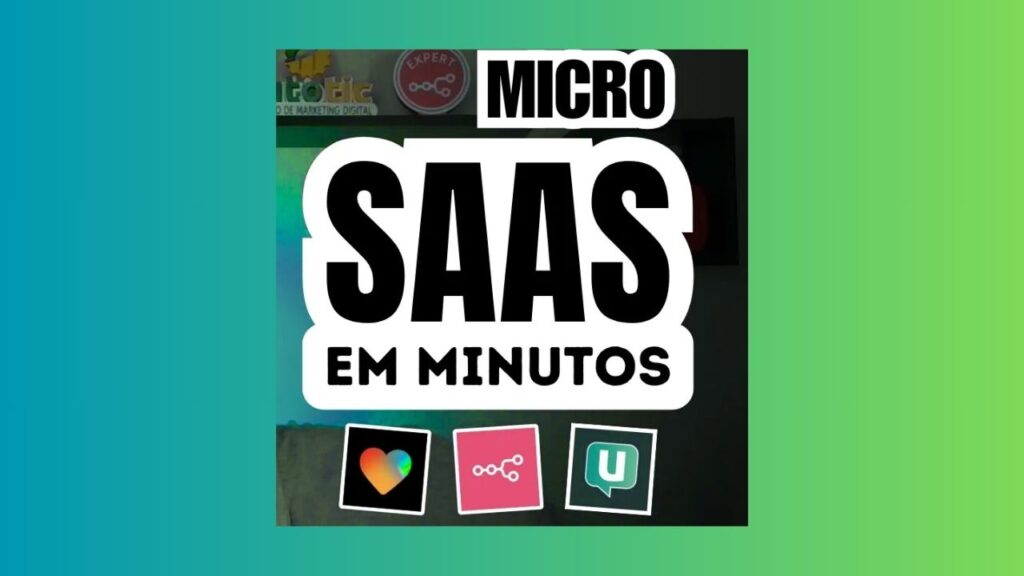The world of SaaS (Software as a Service) is constantly evolving, and in 2025, Micro SaaS businesses are presenting unprecedented opportunities for solo founders and small teams. With the rise of no-code and low-code platforms, building and launching a profitable SaaS product has never been more accessible. This guide dives into how you can create your first Micro SaaS using two powerful tools: n8n, a robust workflow automation platform, and Lovable.dev, an AI-powered app builder. These platforms are revolutionizing the way developers and entrepreneurs approach software creation, making it faster, more efficient, and more user-centric. In fact, Lovable.dev reached £13.50 million ARR within just three months of its launch, underscoring the significant market demand for AI-assisted software development tools.

This article is tailored for aspiring entrepreneurs, developers, and anyone looking to leverage automation and AI to build a Micro SaaS business. We’ll explore the core features of n8n and Lovable.dev, provide a step-by-step guide to integrating them, and offer actionable strategies for launching and growing your SaaS product in 2024.
Understanding the Modern Micro SaaS Landscape
The Micro SaaS landscape is ripe with opportunity, but understanding its nuances is crucial for success.
Definition and Market Opportunity
A Micro SaaS is a small, niche software product typically built and managed by a single person or a small team. These businesses focus on solving very specific problems for a targeted audience. The beauty of a Micro SaaS lies in its simplicity, low overhead, and potential for high profitability.
Current market trends indicate a growing demand for specialized software solutions that cater to unique needs. This creates a fertile ground for Micro SaaS ventures that can quickly adapt and deliver value to niche markets. Why is now the perfect time for solo founders? Because platforms like n8n and Lovable.dev democratize software development, enabling individuals to create powerful applications without extensive coding knowledge.
Essential Tools for Modern Micro SaaS Development
To thrive in the Micro SaaS arena, you need the right tools. Here’s where n8n and Lovable.dev come into play:
- n8n: Founded in 2019, n8n is a workflow automation platform that uniquely combines AI capabilities with business process automation. It allows you to integrate various applications and services through a visual, workflow-based system.
- Lovable.dev: Lovable.dev is an AI-powered app builder designed to streamline software development. It allows users to describe their app ideas in plain language, which the AI translates into functional applications.
The integration possibilities between these platforms are vast. You can use n8n to automate backend processes, data management, and customer interactions, while Lovable.dev handles the frontend interface and user experience.
Getting Started with n8n for Micro SaaS
n8n is a game-changer for automating complex workflows. Let’s explore its core features and how you can start using it for your Micro SaaS.
Core Features and Capabilities
n8n offers a range of features that make it ideal for Micro SaaS development:
- Visual Workflow Editor: A drag-and-drop interface that allows you to create workflows without writing code.
- Code Integration Options: The ability to write JavaScript or Python directly in workflows when needed, providing flexibility for complex tasks.
- Workflow Branching and Error Handling: Tools to merge workflow branches and automatically manage errors, ensuring smooth operation.
- Templates and Pre-Built Solutions: Access to over 1,700 templates to jumpstart your projects and streamline development.
These features allow you to automate repetitive tasks, integrate different applications, and create custom workflows tailored to your specific Micro SaaS needs.
Setting Up Your First Automation
Creating your first automation in n8n is straightforward. Here’s a step-by-step guide:
- Define Your Workflow: Identify a specific process you want to automate. For example, sending a welcome message to new users via WhatsApp.
- Create a New Workflow: Open n8n and create a new workflow using the visual editor.
- Add Nodes: Drag and drop the necessary nodes onto the canvas. These nodes represent different actions or integrations, such as a “Webhook” trigger and a “WhatsApp” node.
- Configure Nodes: Configure each node with the required information. For the “Webhook” trigger, set up the endpoint that will receive data from Lovable.dev. For the “WhatsApp” node, configure the API credentials and message template.
- Connect Nodes: Connect the nodes in the correct order to define the flow of data.
- Test Your Workflow: Test the workflow to ensure it works as expected. Use the “Execute Workflow” button and check the logs for any errors.
- Activate Your Workflow: Once you’re satisfied with the results, activate the workflow to make it live.
Best practices for workflow design include keeping your workflows modular, using descriptive names for nodes, and implementing error handling to prevent failures. Real-world automation examples include automated customer onboarding, data synchronization between databases, and personalized email campaigns.
Leveraging Lovable.dev for Interface Design
Lovable.dev simplifies the process of creating user-centric interfaces with its AI-powered development features.
AI-Powered Development Features
Lovable.dev offers a range of AI-driven features that streamline interface design:
- Natural Language Interface Capabilities: Describe your app ideas in plain language, and Lovable.dev will generate the corresponding interface.
- Code Ownership and Customization Options: Retain full ownership of the generated code, allowing you to customize and extend the functionality as needed.
- Full-Stack Development Capabilities: Generate React + Tailwind CSS front-ends with Vite, provision back-end code, and orchestrate databases and cloud deployment.
These features make it easier than ever to create professional-looking interfaces without writing code.
Building User-Centric Interfaces
Creating a user-centric interface is crucial for the success of your Micro SaaS. Here’s how Lovable.dev can help:
- AI-Driven Design Optimization: Lovable.dev can analyze existing designs and suggest improvements based on user data.
- Conversational Interface Implementation: Implement conversational interfaces that allow users to interact with your app in a more natural way.
- Predictive UX Features: Anticipate user needs and automate routine tasks before users even request them.
Best practices for interface design include keeping the interface simple and intuitive, providing clear feedback to users, and optimizing for mobile devices.
Creating a Complete Micro SaaS Solution
The real magic happens when you integrate n8n and Lovable.dev to create a complete Micro SaaS solution.
Integration Strategy
Combining n8n and Lovable.dev effectively requires a well-thought-out integration strategy. Here are some key considerations:
- Data Flow Optimization: Ensure data flows seamlessly between the frontend (Lovable.dev) and backend (n8n). Use webhooks to trigger n8n workflows when certain events occur in Lovable.dev.
- Security Considerations: Implement security measures to protect sensitive data. Use encrypted connections and secure API keys.
- Scaling Considerations: Design your integration to scale as your user base grows. Use efficient data structures and optimize your workflows for performance.
Development Best Practices
To ensure the success of your Micro SaaS, follow these development best practices:
- MVP Approach: Start with a minimal viable product (MVP) that solves the core problem.
- Iterative Development Process: Continuously improve your product based on user feedback and analytics data.
- Testing and Quality Assurance: Thoroughly test your product to ensure it works as expected.
- User Feedback Implementation: Actively solicit and implement user feedback to improve your product.
Launch and Growth Strategy
Launching and growing your Micro SaaS requires a strategic approach to market validation and growth tactics.
Market Validation
Before launching your product, it’s essential to validate your market. Here are some key steps:
- Identifying Your Niche: Find a specific market gap that your software can address.
- Competitor Analysis: Study existing solutions in your chosen niche to identify opportunities for differentiation.
- User Research Methods: Engage directly with potential customers through surveys and social media to understand their pain points.
Growth Tactics
Once you’ve validated your market, it’s time to focus on growth. Here are some effective tactics:
- Pricing Strategy Development: Develop a pricing model that reflects the value provided while remaining competitive.
- Marketing Approach: Use a combination of content marketing, social media marketing, and paid advertising to reach your target audience.
- Customer Acquisition Channels: Explore different channels for acquiring customers, such as partnerships, referrals, and affiliate programs.
- Scaling Considerations: Plan for scaling your infrastructure and team as your user base grows.
Case Studies and Success Stories
Learning from others’ experiences can provide valuable insights and inspiration.
- Real-World Examples from n8n Users: Many businesses have successfully used n8n to automate their processes and improve efficiency.
- Lovable.dev Success Stories: Lovable.dev has helped numerous entrepreneurs build and launch their Micro SaaS products quickly and efficiently.
- Lessons Learned and Best Practices: By studying these success stories, you can learn valuable lessons and best practices for building your own Micro SaaS.
- ROI Analysis and Metrics: Analyze the ROI of these success stories to understand the potential financial benefits of using n8n and Lovable.dev.
Future-Proofing Your Micro SaaS
To ensure the long-term success of your Micro SaaS, it’s important to stay ahead of emerging trends and develop effective scaling strategies.
Emerging Trends
- AI Integration Opportunities: Explore new ways to integrate AI into your Micro SaaS to improve user experience and automate tasks.
- Automation Evolution: Stay up-to-date with the latest advancements in automation technology to continuously improve your workflows.
- Interface Design Innovations: Keep an eye on emerging trends in interface design to ensure your product remains modern and user-friendly.
Scaling Strategies
- Growth Planning: Develop a detailed growth plan that outlines your goals and strategies for scaling your business.
- Resource Optimization: Optimize your resources to ensure you’re using them efficiently.
- Team Expansion Considerations: Plan for expanding your team as your business grows, and hire the right people to support your growth.
Conclusion
Building a Micro SaaS in 2025 is an exciting opportunity, and with the right tools and strategies, you can create a profitable and sustainable business. n8n and Lovable.dev provide the perfect combination of automation and AI-powered development to streamline the process and empower solo founders.
To get started, define your niche, validate your market, and start building your MVP using n8n and Lovable.dev. Continuously iterate based on user feedback, and stay ahead of emerging trends to future-proof your Micro SaaS.



